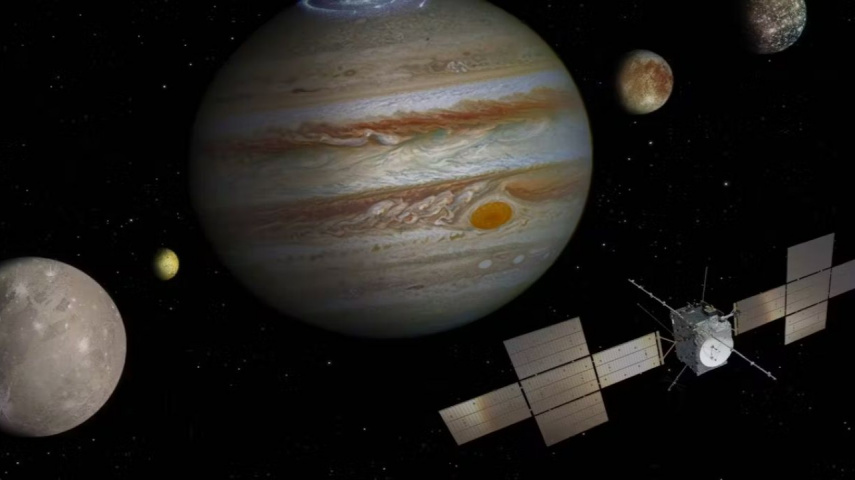NASA reveals mission to investigate Jupiter's moon for signs of life; Deets inside
NASA is preparing to launch a mission to explore Jupiter's moon for signs of life. The Clipper spacecraft will travel to Europa, a moon thought to have the potential for extraterrestrial life.

-
The spacecraft, Clipper will journey to Europa, believed to have potential for extraterrestrial life
-
Preparations are underway at NASA's Jet Propulsion Laboratory in California
NASA has announced an upcoming mission to explore one of Jupiter's icy moons in search of extraterrestrial life, as per NASA.gov. The spacecraft, known as Clipper, is scheduled to embark on this historic journey in October, targeting Europa, a moon thought to have the potential for life.
Mission details
During a recent presentation, US space scientists revealed details about NASA's ambitious mission. The project scientist, Bob Pappalardo, showed the agency's obsession with discovering extraterrestrial life. He highlighted the fundamental question driving NASA's exploration efforts: "Are we alone in the cosmos?"
The $5 billion probe is currently being meticulously prepared at NASA's Jet Propulsion Laboratory in California. Engineers are ensuring that Clipper is free of contaminants before it travels to Europa, which is a critical step in maintaining the integrity of scientific findings.
Mission objectives
Clipper, which will launch aboard a Space X Falcon Heavy rocket, will embark on a five-year journey that will include a planned flyby of Mars to gain momentum. By 2031, it plans to orbit Jupiter and Europa, where it will study and analyze the moon's icy surface. The mission's primary goal is to identify conditions conducive to life rather than detect life itself.
Despite challenges such as intense radiation and communication delays, scientists remain optimistic about Clipper's potential. The spacecraft is outfitted with cutting-edge technology capable of venturing into Europa's environment, which resembles the harsh conditions on Earth where life thrives.
Significance of the mission
Jordan Evans, project manager, explained the mission as advancing our understanding of life in the universe. The recent finding of Europa opens up new avenues for solving the mysteries of extraterrestrial life and may reshape humanity's perception of our place in the universe.
The mission, which began in the late 1990s, is expected to be completed by 2034 after meeting its scientific objectives. Following the research phase, Clipper is scheduled to make its final impact on Jupiter's largest moon, Ganymede.
Tim Larson, deputy project manager, outlined the spacecraft's post-mission disposal plan, which ensures that space exploration efforts are managed responsibly.
ALSO READ: Total Solar Eclipse Wows North America As Netizens Go Absolutely Bizarre Over The Celestial Event





 JOIN OUR WHATSAPP CHANNEL
JOIN OUR WHATSAPP CHANNEL




































































































